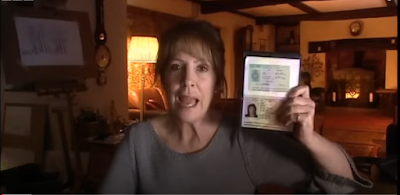His Dark Materials: Language and Representation blog tasks
Language and close-textual analysis
1) Write an analysis of the episode - using your notes from the screening in class. Make specific, detailed reference to moments in the text using media terminology (e.g. media language - camera shots and movement, editing, diegetic/non-diegetic sound, mise-en-scene etc.)
You can currently watch His Dark Materials on BBC iPlayer here.
Camerawork, editing and sound: The camerawork uses wide shots to show the vast, magical world and close-ups to focus on Lyra’s emotions and her bond with her daemon, Pantalaimon. Tracking shots follow Lyra’s movements, highlighting her curiosity and independence. These techniques help immerse the audience in the world while focusing on Lyra’s personal journey.Mise-en-scene: The editing keeps things smooth and flowing, with cross-cutting between different storylines (like Lyra’s sneaking and the Magisterium’s plans) to build suspense. The pacing moves between slower, character-building scenes and quicker, action-packed moments, maintaining a good balance throughout.
Narrative and genre: The music is emotional and cinematic, adding depth to key moments, while sound effects (like the clicking of the alethiometer) give the magical world an immersive feel. Ambient sounds (like street noise and nature) help make the setting feel real while still fantastical.
You can access our notes from the close-textual analysis in a previous class here - you'll need your Greenford Google login to open this.
2) How does His Dark Materials fit the conventions of the fantasy TV genre?
His Dark Materials fits the fantasy genre with its magical elements (daemons, Dust), epic adventure, and a hero’s journey. It blends a rich, otherworldly setting with a classic good vs. evil story and mythical creatures.
3) Applying Propp's character theory, what character roles do some of the main characters in His Dark Materials fit into?
Lyra Belacqua fits Propp's Hero role in His Dark Materials. She embarks on a journey to uncover the mysteries of Dust and rescue the kidnapped children. Along the way, she faces challenges, learns important truths, and grows as a leader. Like a typical hero, she overcomes obstacles, makes allies, and ultimately plays a key role in the larger battle between good and evil.
4) What enigma and action codes (Barthes) can you find in His Dark Materials? Make specific, detailed reference to the text using media terminology (e.g. media language - camera shots, diegetic/non-diegetic sound, mise-en-scene etc.)
Narrative - “The prophecy has begun”. Lyra - creates enigma and action codes; narrative arc for all three seasons of His Dark Materials.
Chase scene - both action and enigma codes (who are they chasing and what will happen).
5) What examples of binary opposition (Levi-Strauss) can you find in His Dark Materials? How do these create narrative or drama for the audience? You can find reminder notes on all these narrative theories here - just scroll down to narrative.
They suggest that young people are good and old people are bad which is binary opposition.
“It’s time to draw sides” - Propp; binary opposition. This creates a narrative where old people are villains and the young people are victims who are now standing up.
Representations
1) How are women represented in His Dark Materials? Are gender stereotypes reinforced or subverted? Think about Lyra and Mrs Coulter here.
The gender roles for women are subverted as most women in the show are independent, for example the main character is more brave and of a leader and on the other hand her friend Will (a boy) is following her lead and he is more of a peacemaker than a leader in their friendship. But the gender roles for women are also reinforced as most women in the show are wearing dresses and wearing makeup which reinforces the stereotype that women should look and dress more feminine.
2) How are men and masculinity represented in His Dark Materials? Think about Will and Lee Scoresby here.
Men and masculinity stereotypes are subverted as some men are following the women orders and commands or following their lead, for example Will follows Lyra's lead and Lyra is the one who usually wants to fight or defends them both, while Will tries to make peace with the others and doesn't want to fight.
3) How is age (e.g. teenagers; adults) represented in His Dark Materials? Does the show reinforce or challenge stereotypes about young people? Think about Lyra and Will plus the abandoned children they meet. Also think about Mrs Coulter and other adults.
Young people seems to challenge the stereotype of a girl being helpless and innocent despite her young age, she had special abilities and seemed to shout and talk back and demand answers. Teenagers are also being reinforced as they are wearing casual clothes which could be an act of rebellion depending on what year it is. Young people are in power and old people are in danger.
4) How is race and ethnicity represented in His Dark Materials? Are stereotypes reinforced or subverted?
Race and ethnicity is represented as there are more white people in the show then black people as there are a few black or mixed people, e.g. Will is the only mixed person we see in the first episode. Also the stereotypes are subverted as we see one American person on a hot air balloon in the show even if HDM is a British show but it has one America person and some Black people.
5) What representations of the world can you find in the episode - is it like real life? A fantasy world? Something from the past or future? Give examples from the episode.
The world in the first episode is like the 1900s kind of but the roles are a bit different as we see Lyra being the leader of her and Will and Will following her around and being the peacemaker. But their world is a fantasy world from the past as the women are dressed more femininely and wear make. up.

Comments
Post a Comment